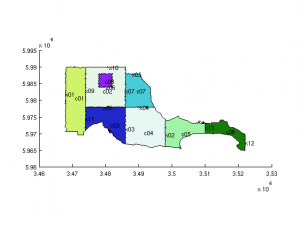NCAGGREGATE: Unterschied zwischen den Versionen
Aus BAWiki
imported>Spohr Susanne + Link: inspect_control_volumes |
imported>Lang Guenther NCPLOT als Postprocessor hinzugefügt, UNTRIM2 als Preprocesor hinzugefügt |
||
| Zeile 28: | Zeile 28: | ||
Geeignete physikalische Daten werden für Kontroll-Volumina sowie Austauschflächen (''Exchanges'') aggregiert. | Geeignete physikalische Daten werden für Kontroll-Volumina sowie Austauschflächen (''Exchanges'') aggregiert. | ||
|preprozessor=[[UNTRIM2007]] | |preprozessor=[[UNTRIM2007]], [[UNTRIM2]] | ||
|postprozessor=[[INSPECT_CONTROL_VOLUMES]], [[NCANALYSE]] | |postprozessor=[[INSPECT_CONTROL_VOLUMES]], [[NCANALYSE]], [[NCPLOT]] | ||
|programmiersprache=Fortran95 | |programmiersprache=Fortran95 | ||
|zus_software= --- | |zus_software= --- | ||
Version vom 12. Februar 2015, 09:28 Uhr
Basisinformationen
Programm-Name
NCAGGREGATE
Version
Februar 2014
Beschreibung
Februar 2014
Stichworte
Analyse
Postprocessor
synoptische Berechnungsergebnisse
CF NetCDF Format für 2D-Daten
aggregierte Daten für Kontroll-Volumina
Verfahren für unstrukturierte orthogonale Gitternetze
Parallelisierung mit OpenMP.
Kurzbeschreibung
Das Programm NCAGGREGATE dient der Aggregation von in CF NetCDF Dateien gespeicherten synoptischen Daten für Kontroll-Volumina.

Eingabe-Dateien
- allgemeine Eingabedaten (Dateityp ncaggregate.dat);
- synoptische Datensätze (Dateityp cf-netcdf.nc);
- Kontroll-Volumina (Dateityp ipds.dat).
Ausgabe-Dateien
- Aggregierte Daten Dateityp cf-netcdf.nc);
- (optional) Datei mit Informationen zum Programmablauf (Dateityp ncaggregate.sdr);
- (optional) Datei mit Testausgaben (Dateityp ncaggregate.trc).
Methode
Geeignete physikalische Daten werden für Kontroll-Volumina sowie Austauschflächen (Exchanges) aggregiert.
Vorlauf-Programme
Nachlauf-Programme
INSPECT_CONTROL_VOLUMES, NCANALYSE, NCPLOT
Weitere Informationen
Programmiersprache
Fortran95
zusätzliche Software
---
Originalversion
Programmpflege
Dokumentation/Literatur
Musterdateien finden sich in $PROGHOME/examples/ncaggregate/
zurück zu Programmkennblätter
